Category Inclusive Speaking Questions
Shared on Instagram and archived here, this section shares a series of questions you can ask yourself to identify gaps in your strategy and delivery, so you can become a truly inclusive communication professional.
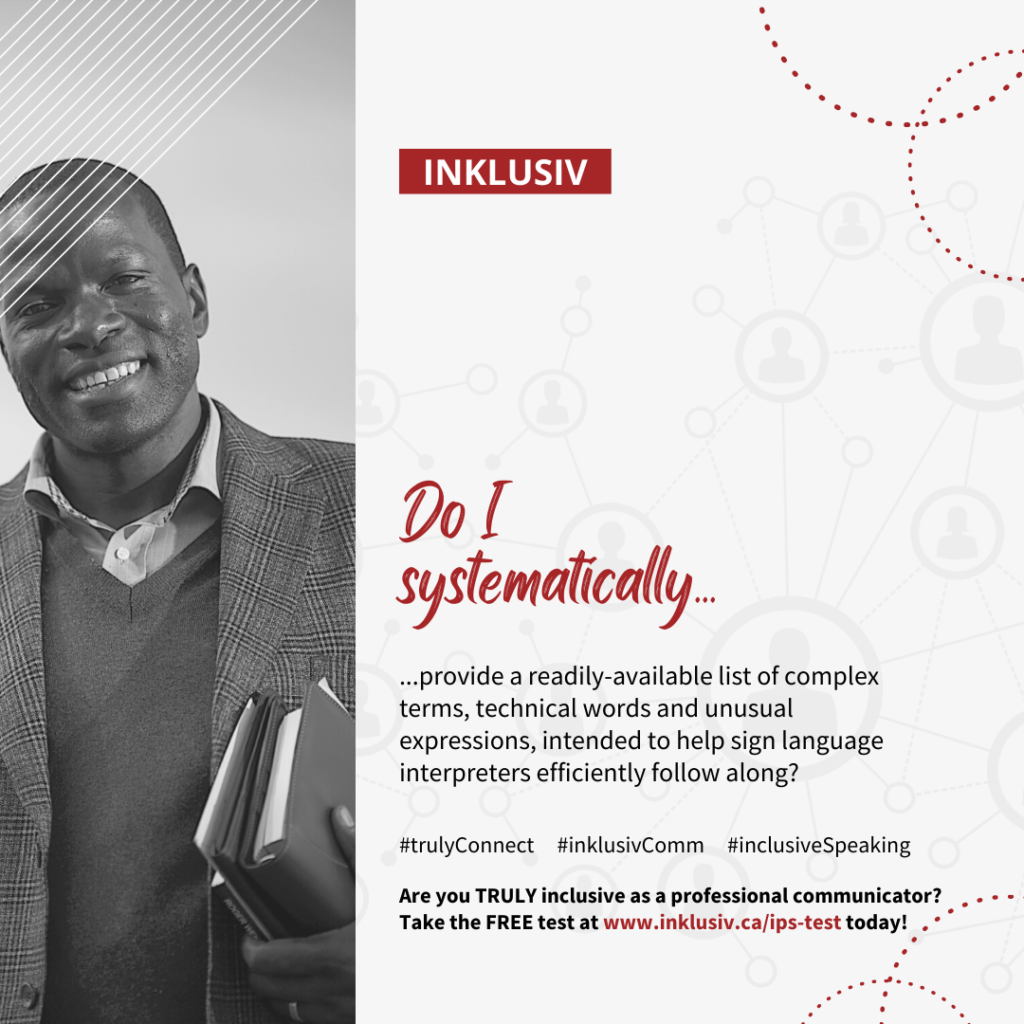

“Do I systematically provide a readily-available list of complex terms, technical words and unusual expressions, intended to help sign language interpreters efficiently follow along?”
More details about IPS Self-Assessment #097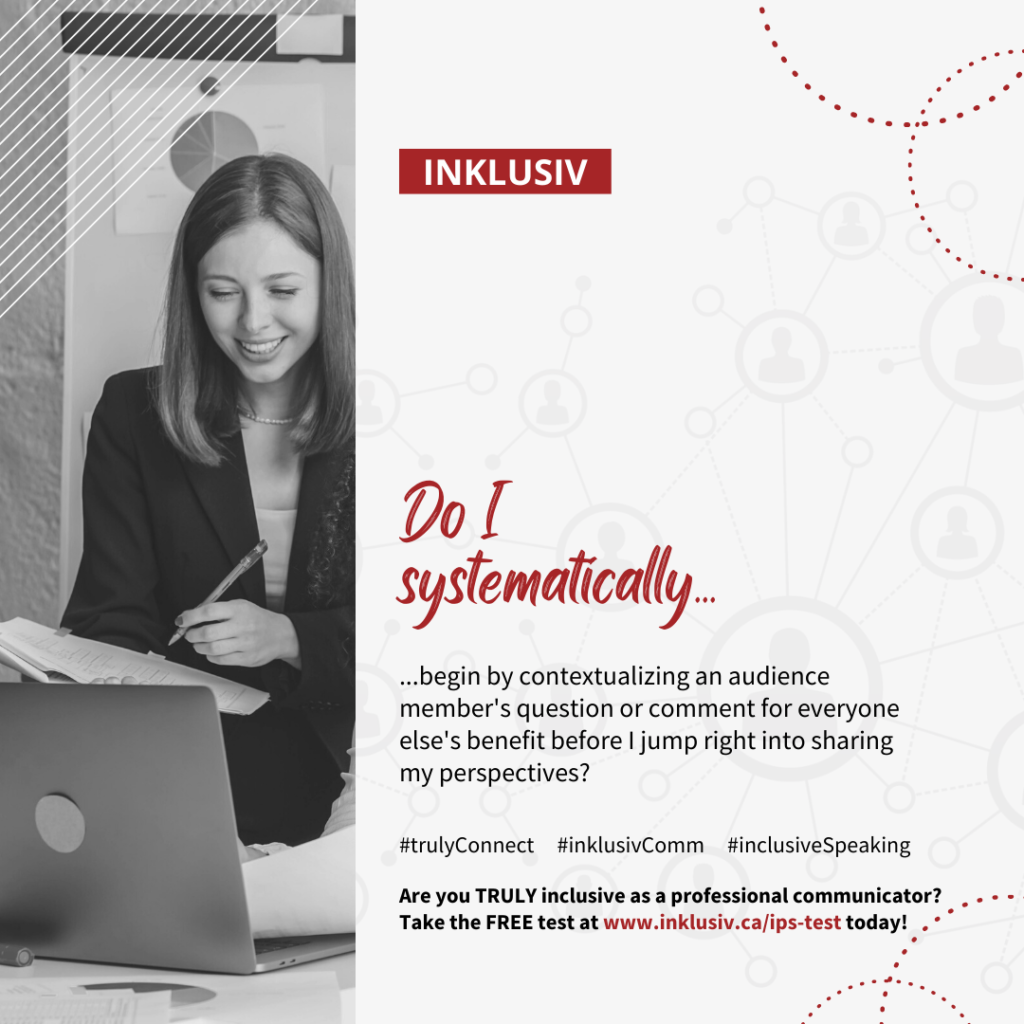

“Do I systematically begin by contextualizing an audience member’s question or comment for everyone else’s benefit before I jump right into sharing my perspectives?”
More details about IPS Self-Assessment #096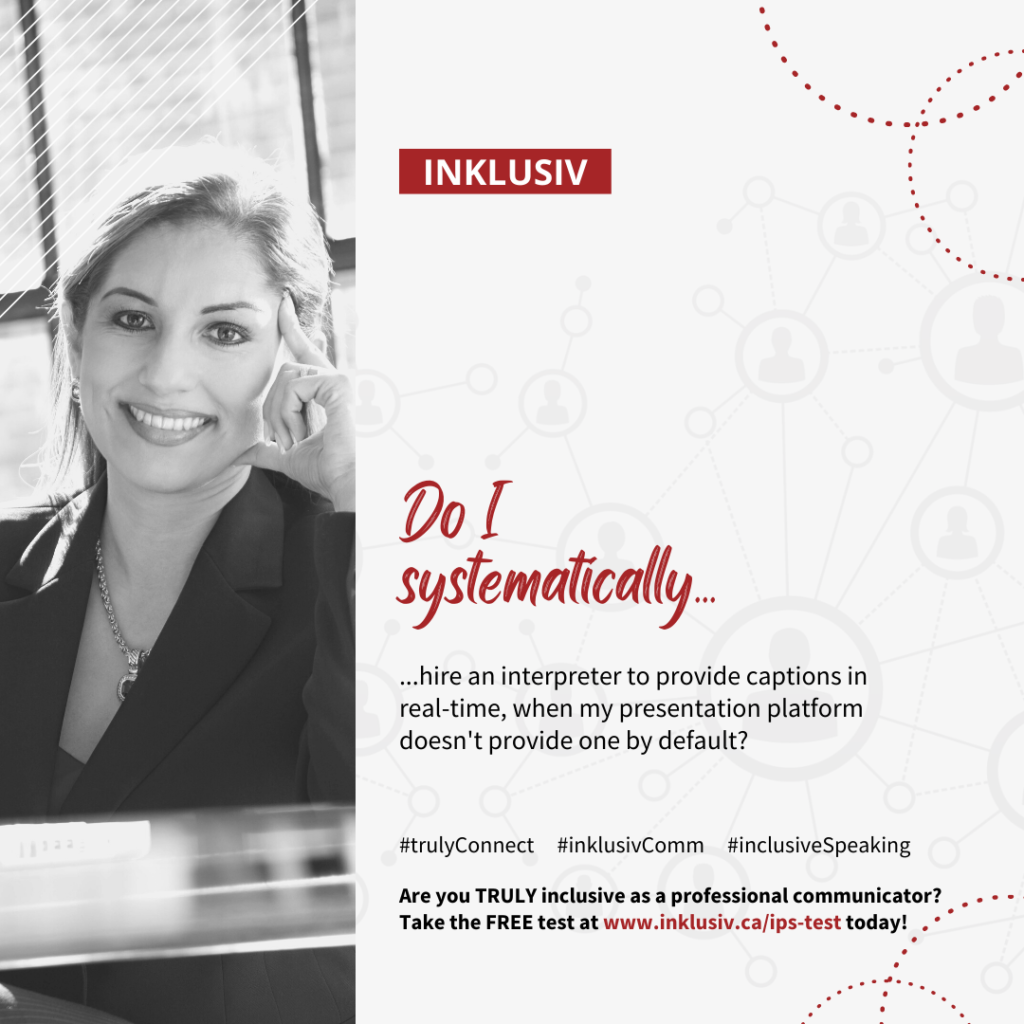

“Do I systematically hire an interpreter to provide captions in real-time, when my presentation platform doesn’t provide one by default?”
More details about IPS Self-Assessment #095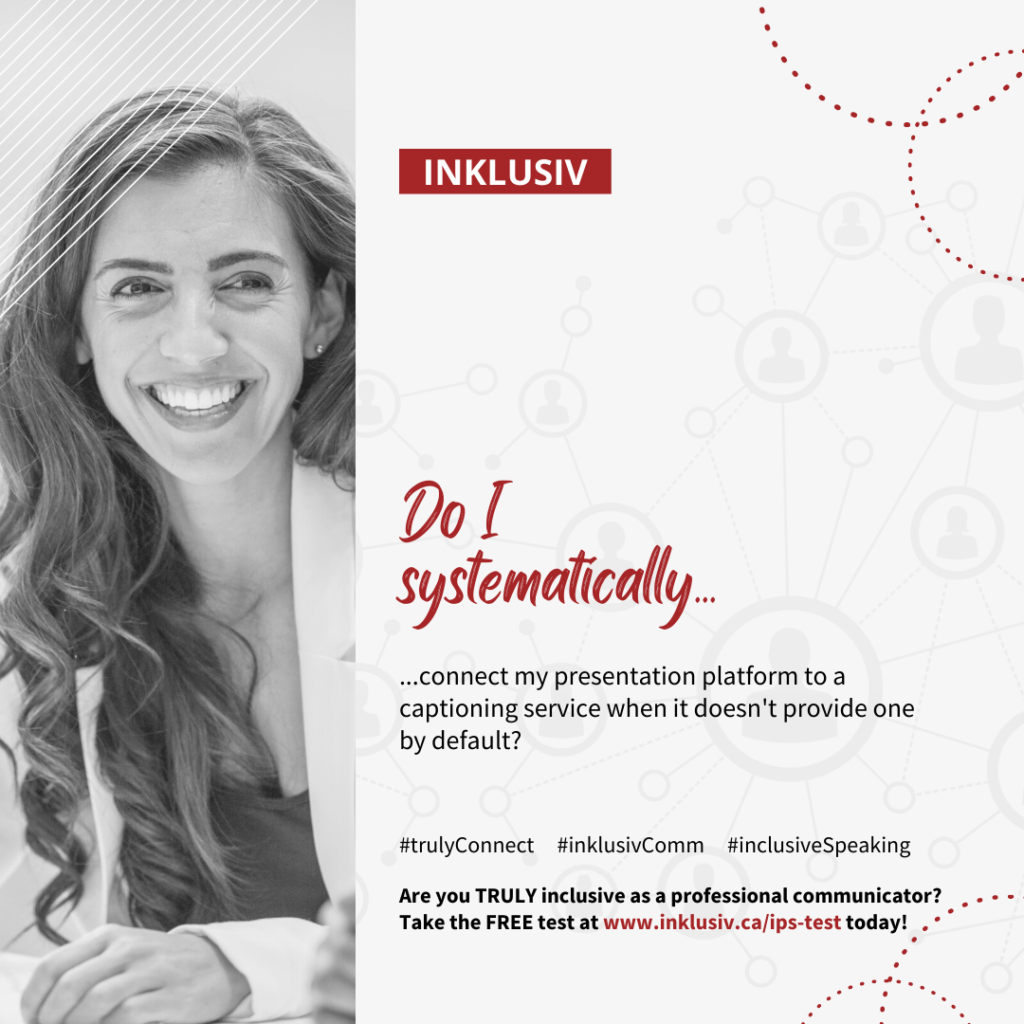

“Do I systematically connect my presentation platform to a captioning service when it doesn’t provide one by default?”
More details about IPS Self-Assessment #094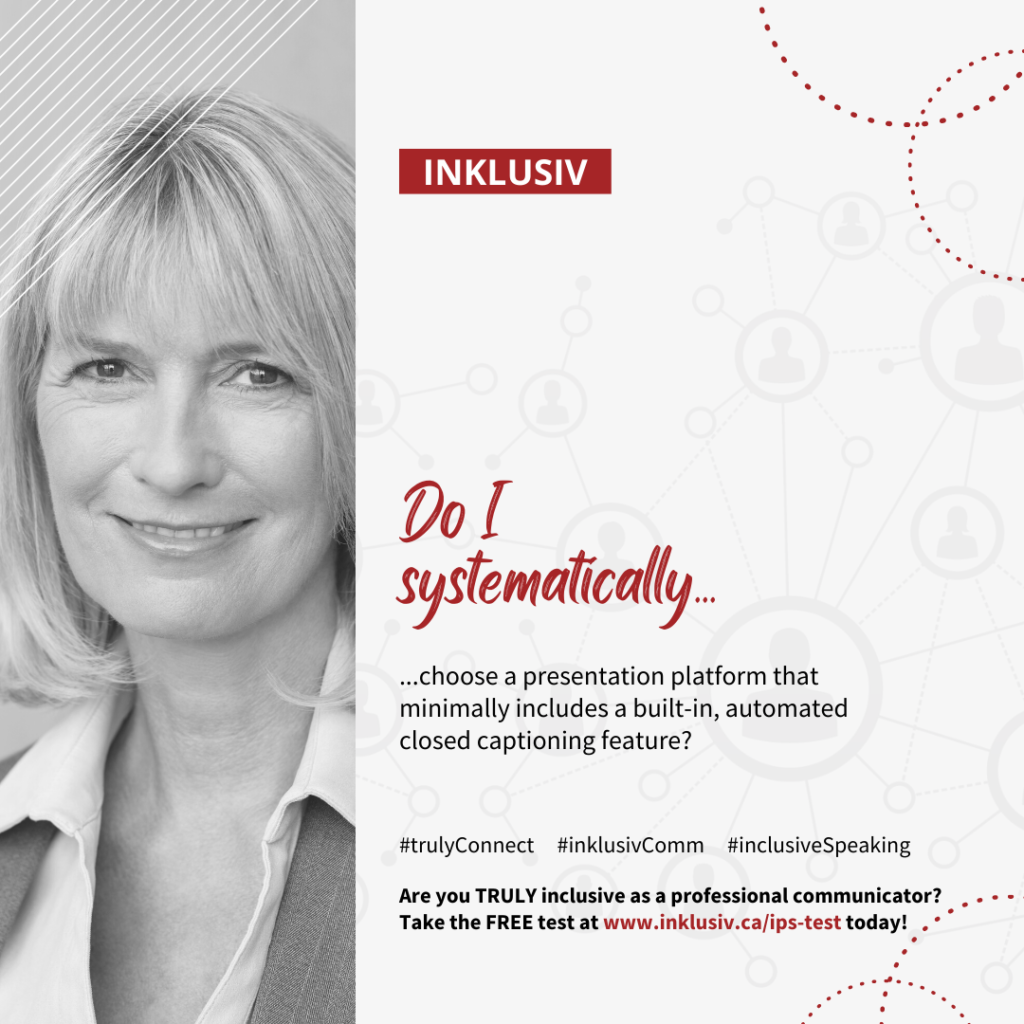

“Do I systematically choose a presentation platform that minimally includes a built-in, automated closed captioning feature?”
More details about IPS Self-Assessment #093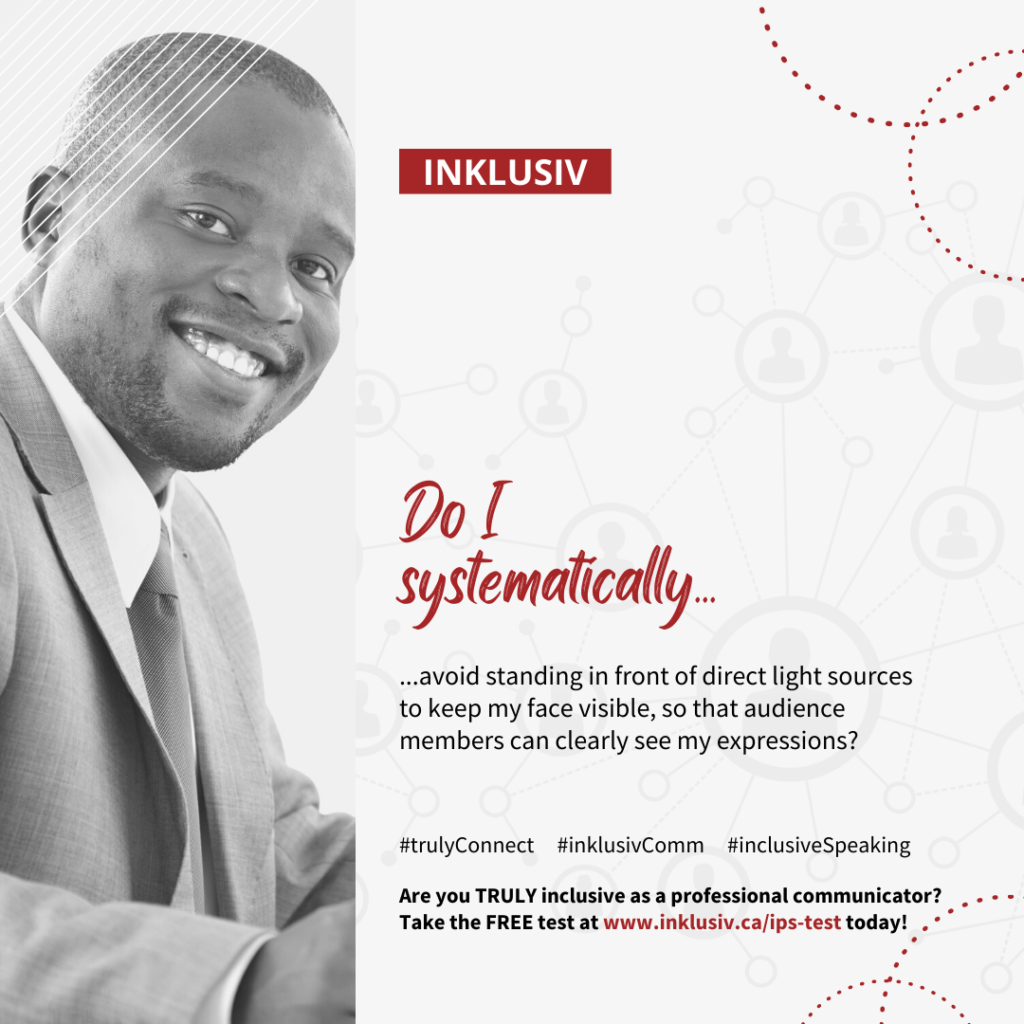

“Do I systematically avoid standing in front of direct light sources to keep my face visible, so that audience members can clearly see my expressions?”
More details about IPS Self-Assessment #092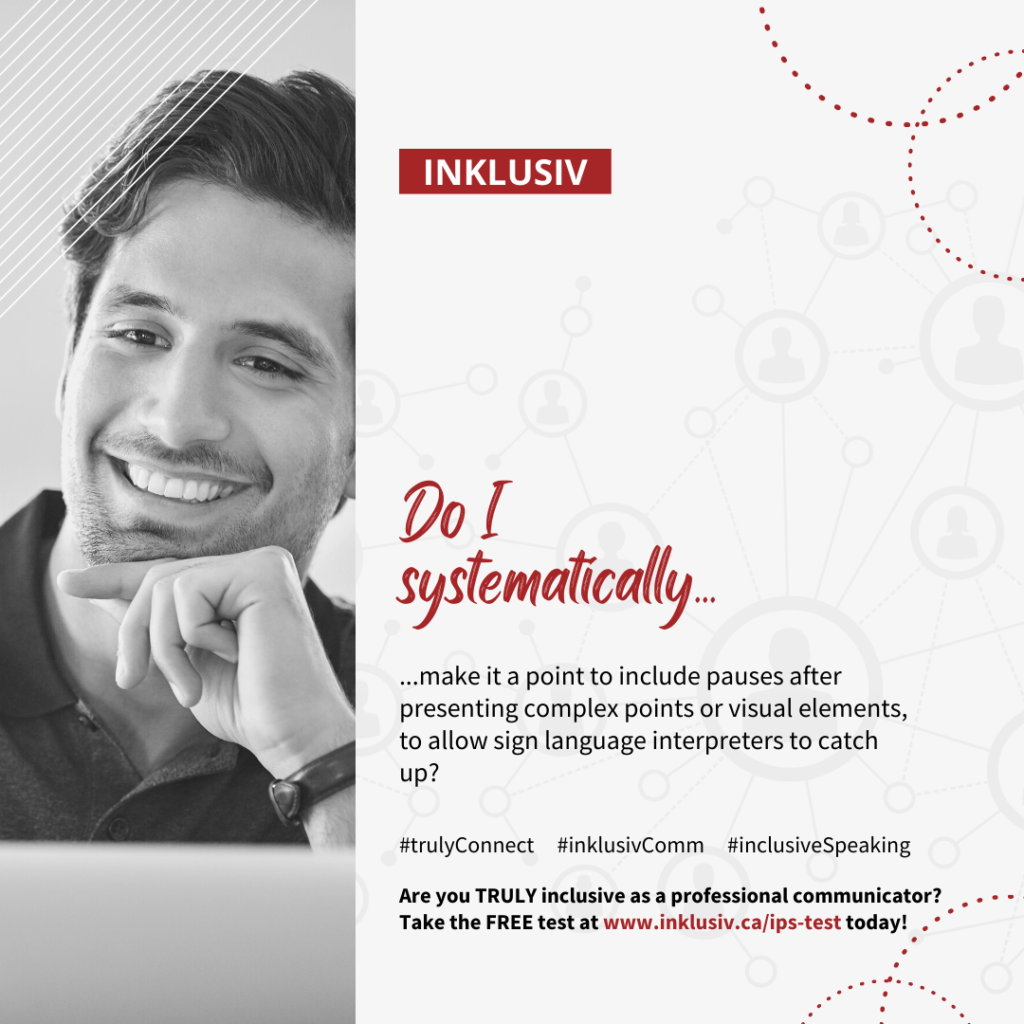

“Do I systematically make it a point to include pauses after presenting complex points or visual elements, to allow sign language interpreters to catch up?”
More details about IPS Self-Assessment #091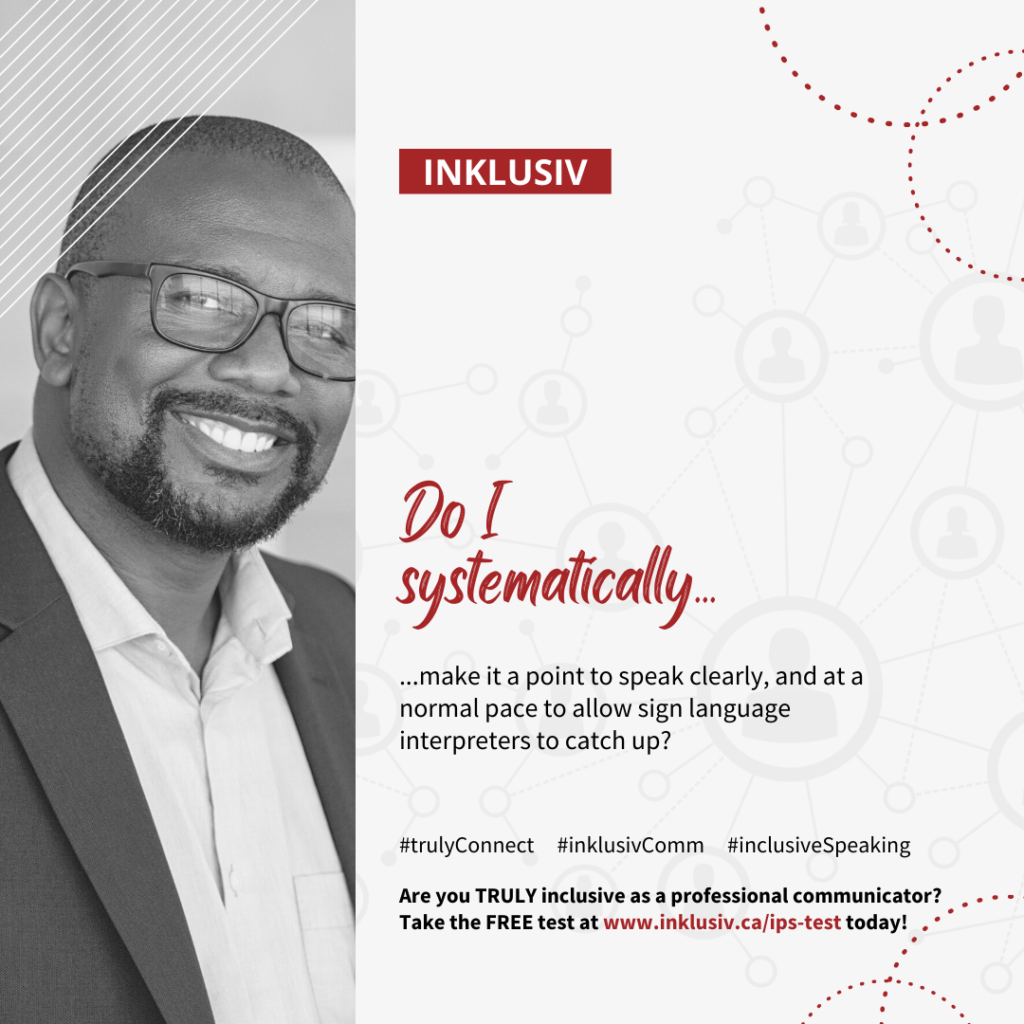

“Do I systematically make it a point to speak clearly, and at a normal pace to allow sign language interpreters to catch up?”
More details about IPS Self-Assessment #090

“Do I systematically remind myself that not everyone in the audience will be proficient in the commonly agreed-upon language used during the event?”
More details about IPS Self-Assessment #089

“Do I systematically keep in mind that audience members may not feel comfortable outing themselves when asked if everyone can properly hear me?”
More details about IPS Self-Assessment #088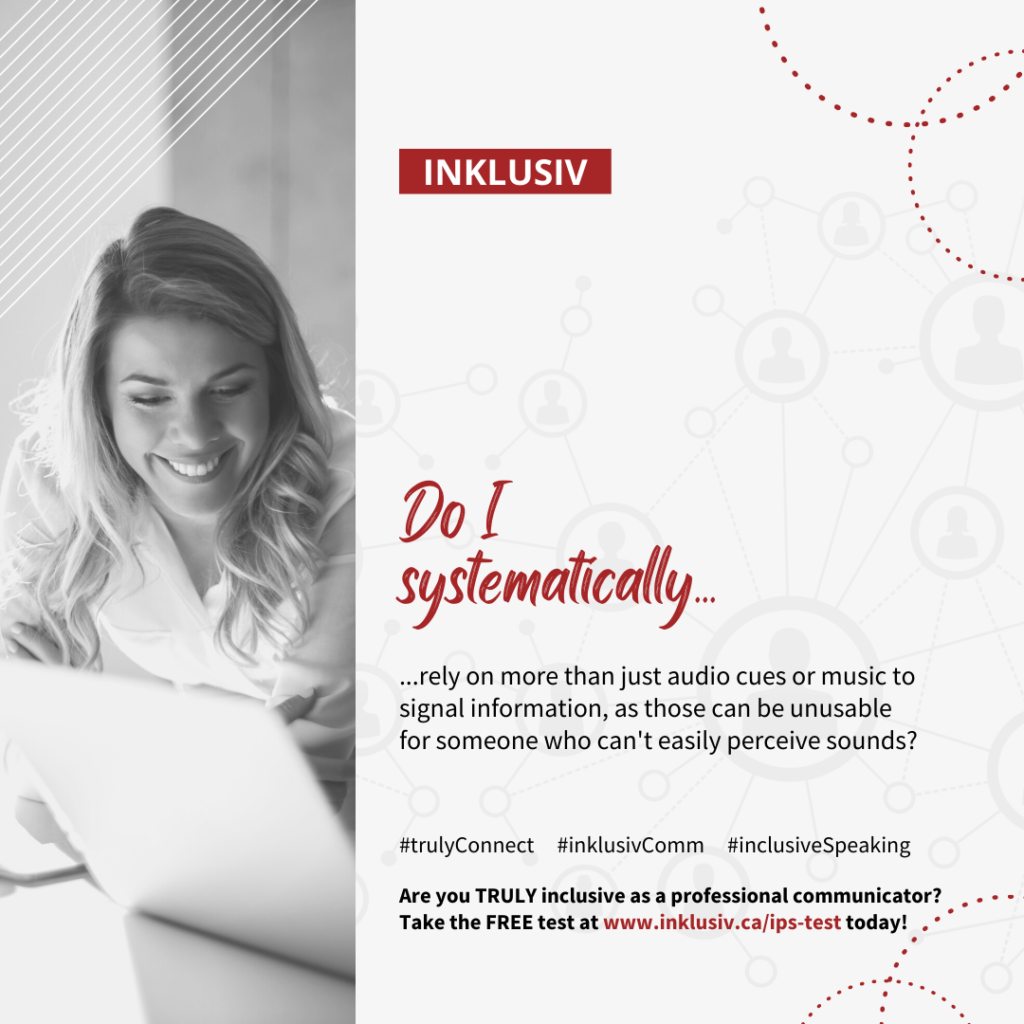

“Do I systematically rely on more than just audio cues or music to signal information, as those can be unusable for someone who can’t easily perceive sounds?”
More details about IPS Self-Assessment #087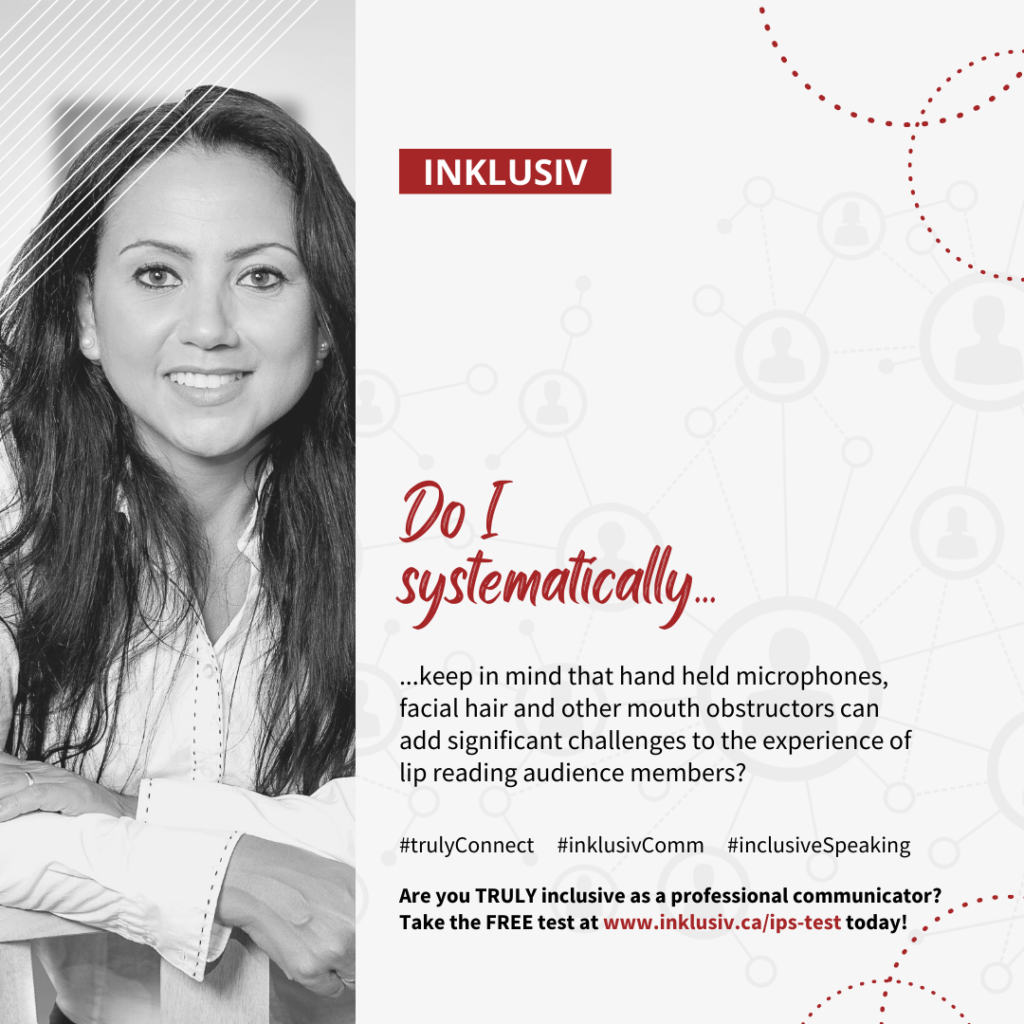

“Do I systematically keep in mind that hand held microphones, facial hair and other mouth obstructors can add significant challenges to the experience of lip reading audience members?”
More details about IPS Self-Assessment #086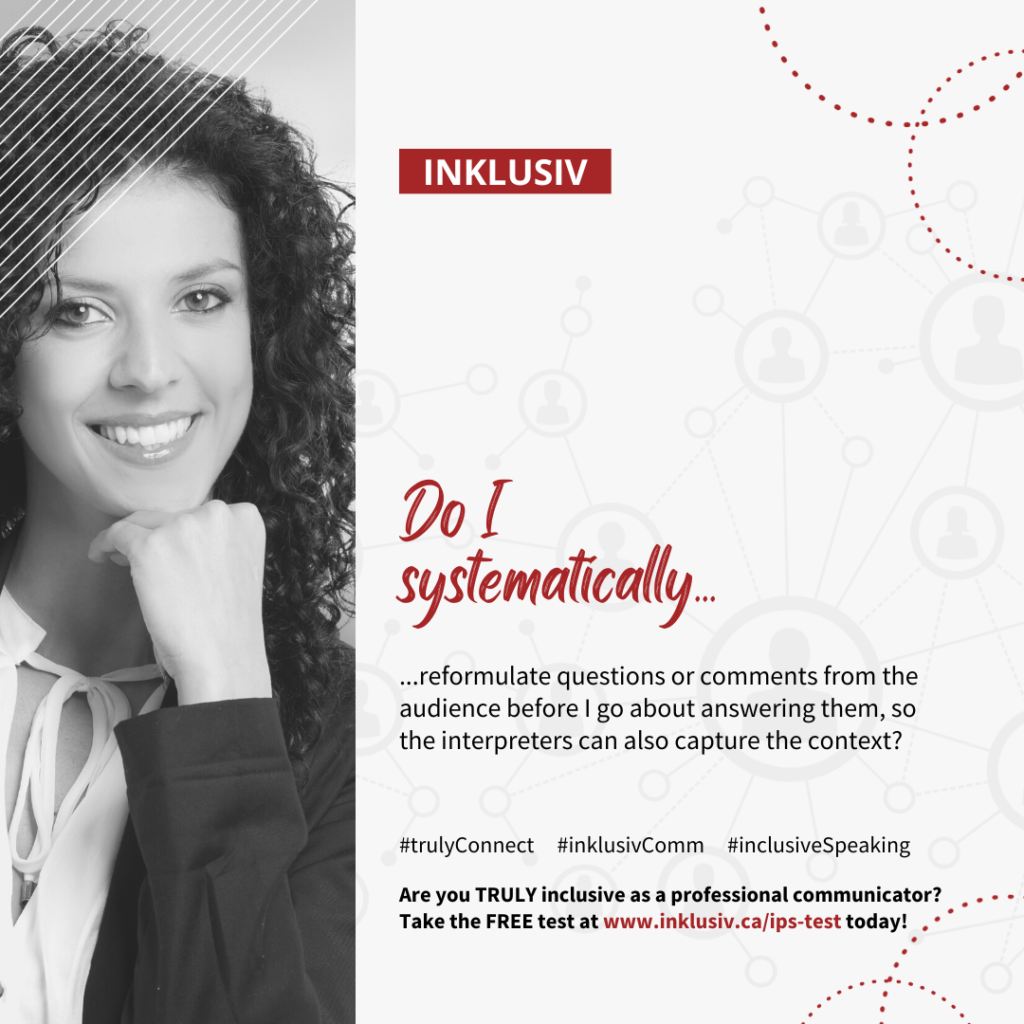

“Do I systematically reformulate questions or comments from the audience before I go about answering them, so the interpreters can also capture the context?”
More details about IPS Self-Assessment #085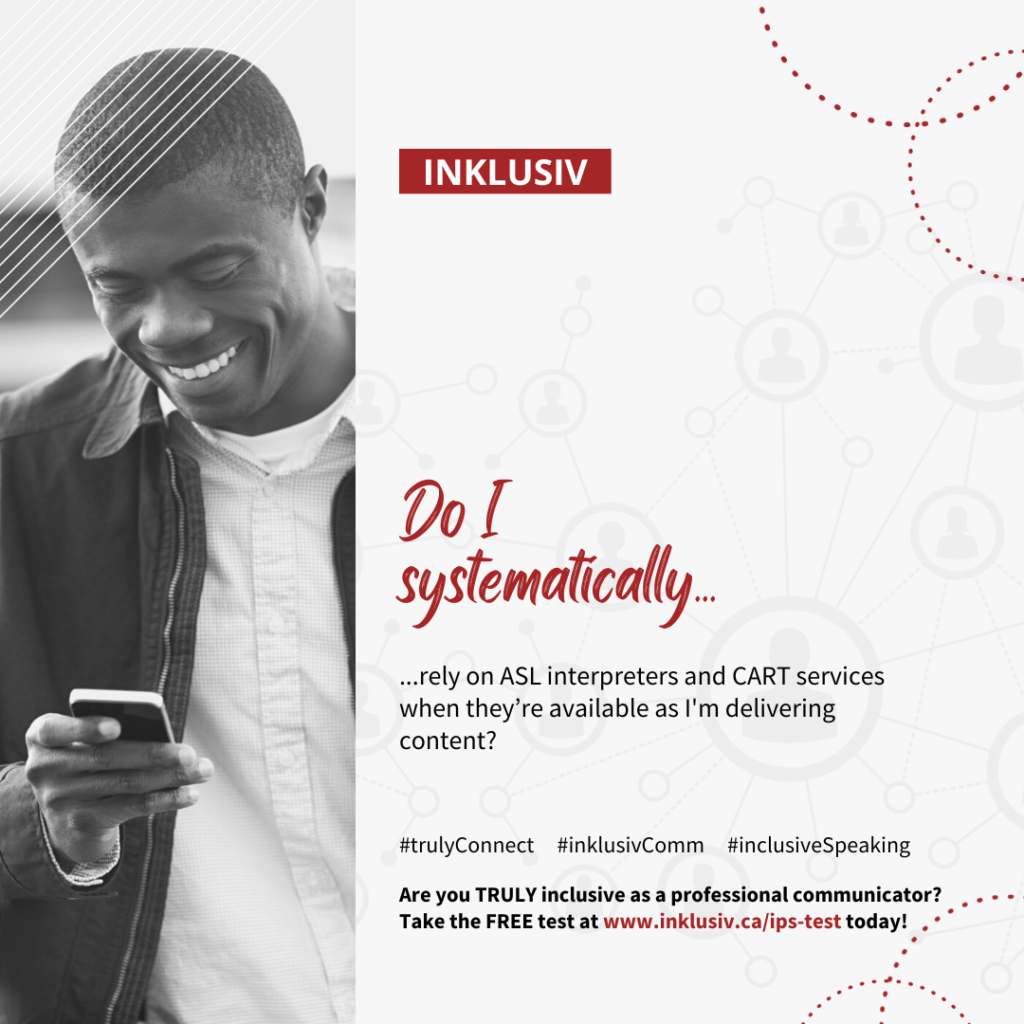

“Do I systematically rely on ASL interpreters and CART services when they’re available as I’m delivering content?”
More details about IPS Self-Assessment #084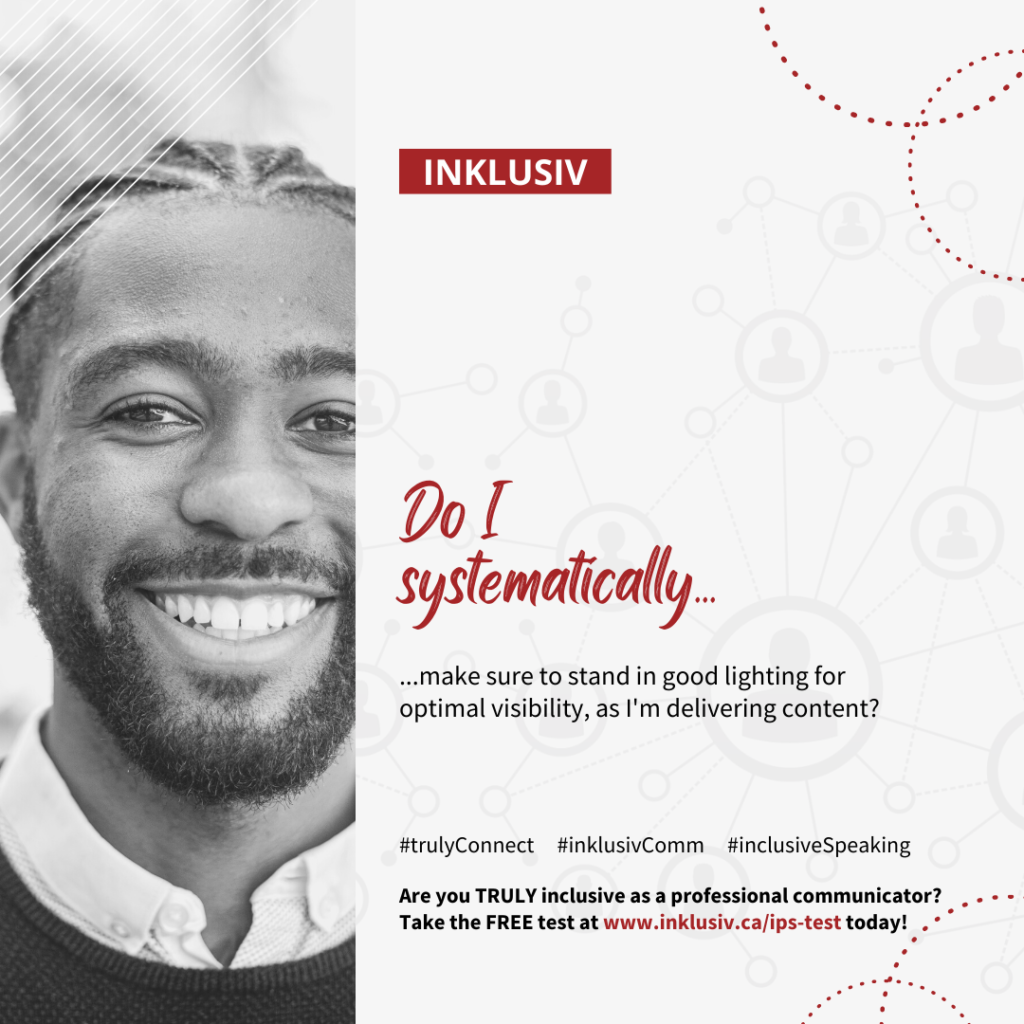

“Do I systematically make sure to stand in good lighting for optimal visibility as I’m delivering content?”
More details about IPS Self-Assessment #083

“Do I systematically avoid the use of jargony language or technical terms, unless I absolutely have to?”
More details about IPS Self-Assessment #082

“Do I systematically explain what abbreviations, acronyms or other technical terms mean or stand for as part of my content delivery?”
More details about IPS Self-Assessment #081

“Do I systematically provide transcript files every time pre-recorded video and audio files are used as part of my content and delivery?”
More details about IPS Self-Assessment #080

“Do I systematically provide synchronized captions every time pre-recorded video files are used as part of my content and delivery?”
More details about IPS Self-Assessment #079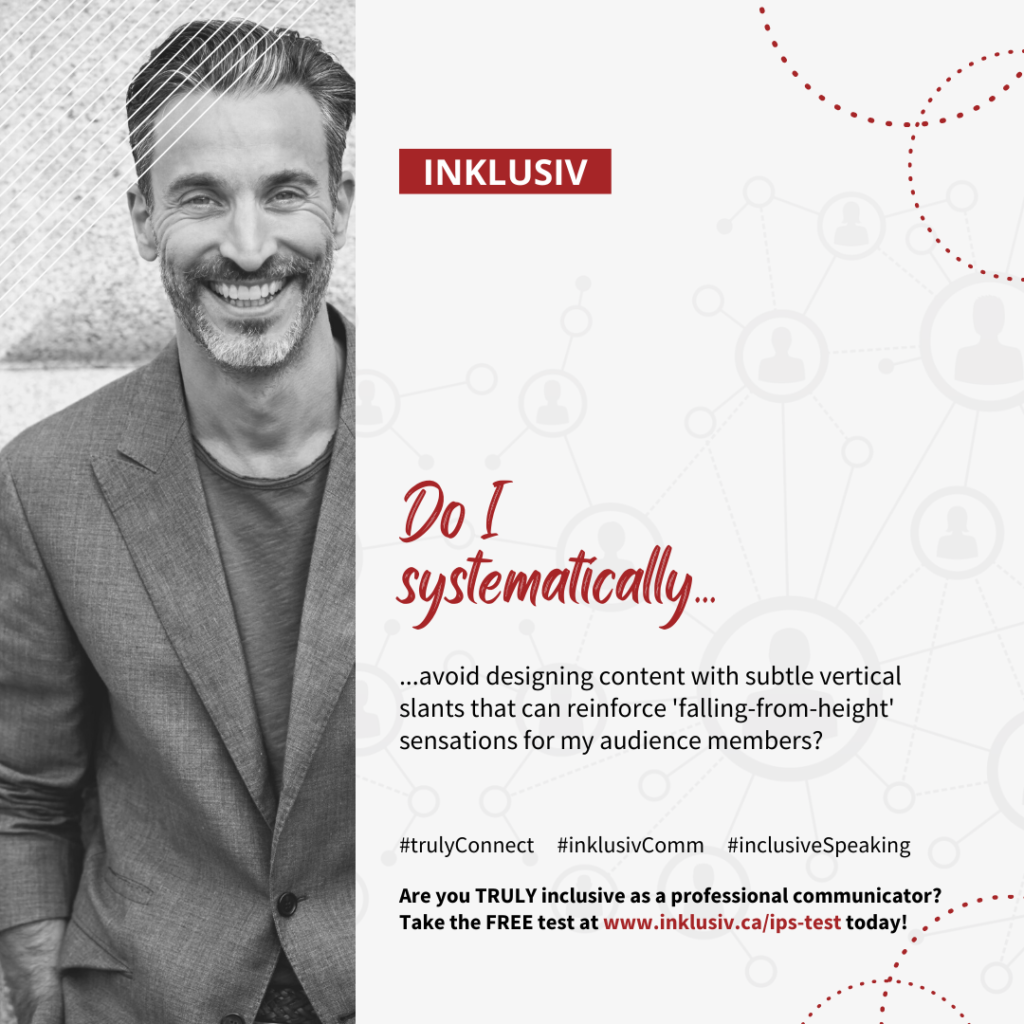

“Do I systematically avoid designing content with subtle vertical slants that can reinforce ‘falling-from-height’ sensations for my audience members?”
More details about IPS Self-Assessment #078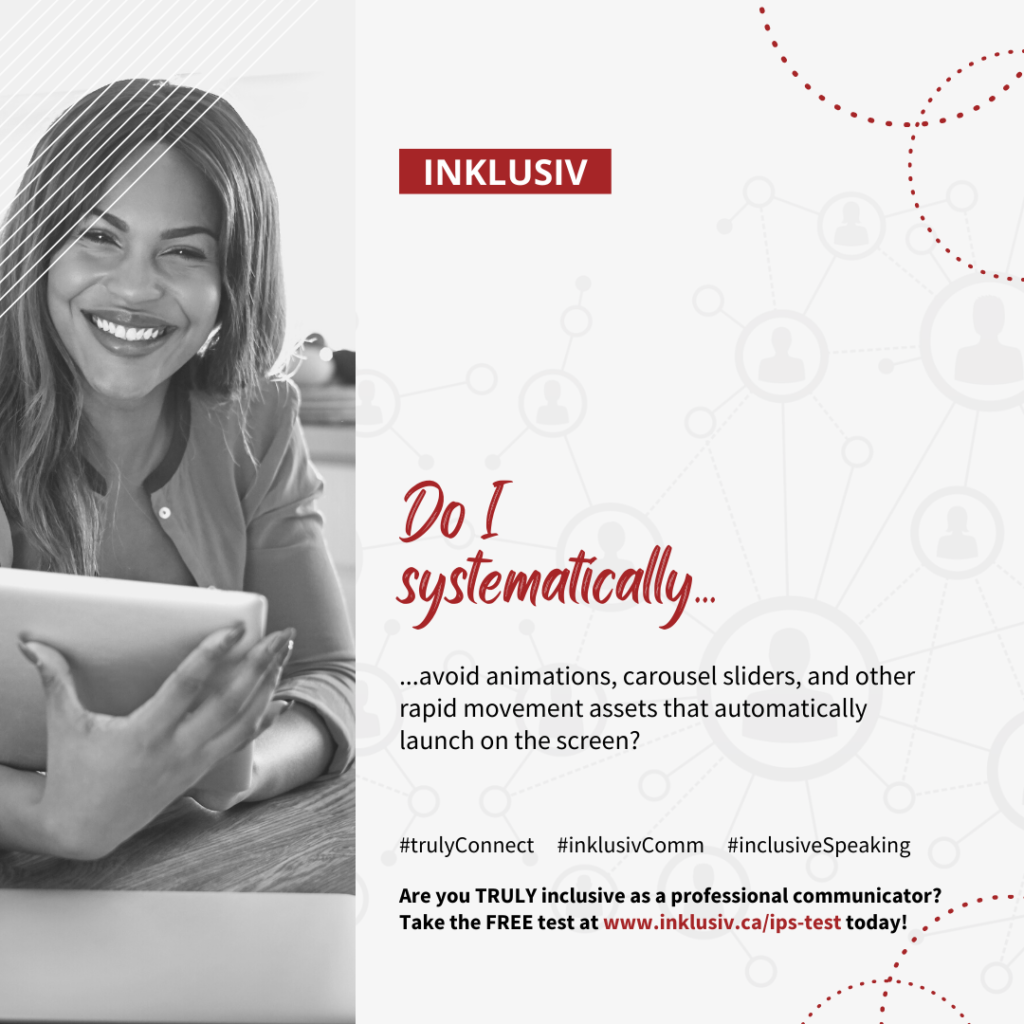

“Do I systematically avoid animations, carousel sliders, and other rapid movement assets that automatically launch on the screen?”
More details about IPS Self-Assessment #077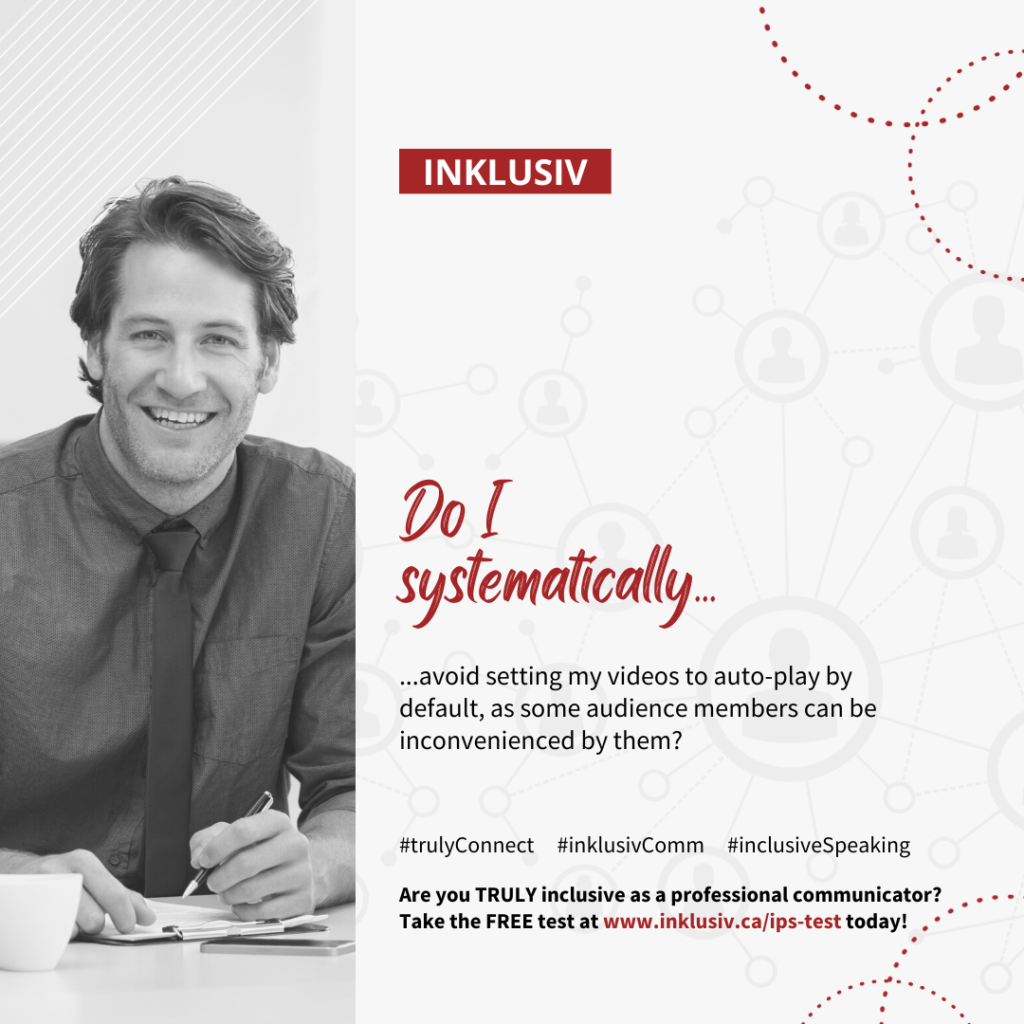

“Do I systematically avoid setting my videos to auto-play by default, as some audience members can be inconvenienced by them?”
More details about IPS Self-Assessment #076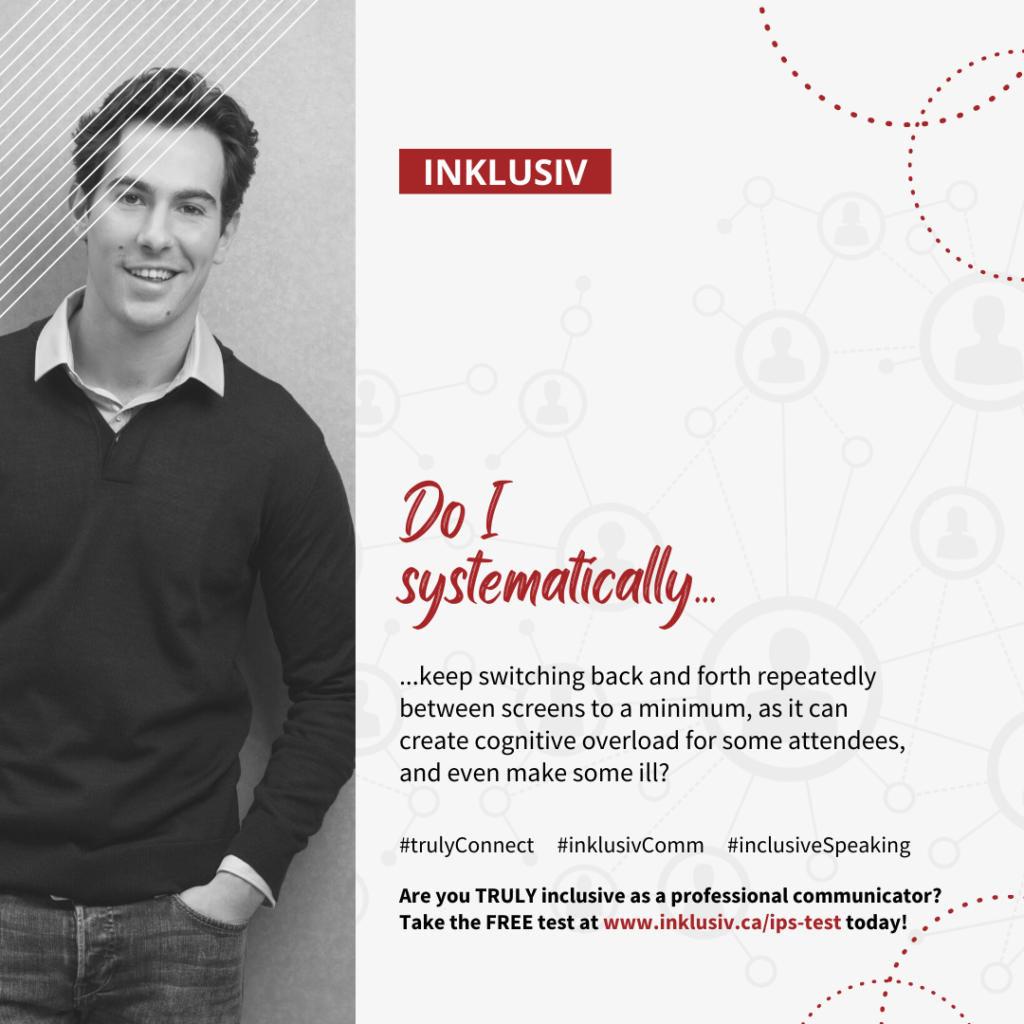

“Do I systematically keep switching back and forth repeatedly between screens to a minimum, as it can create cognitive overload for some attendees, and even make some ill?”
More details about IPS Self-Assessment #075

“Do I systematically avoid assuming that audience members will be able to fully rely on their hand-eye coordination to interact, pinpoint or trigger targets on a screen?”
More details about IPS Self-Assessment #074

“Do I systematically refrain from making screen animations mandatory, as these effects can trigger nausea, dizziness, and headaches for some audience members?”
More details about IPS Self-Assessment #073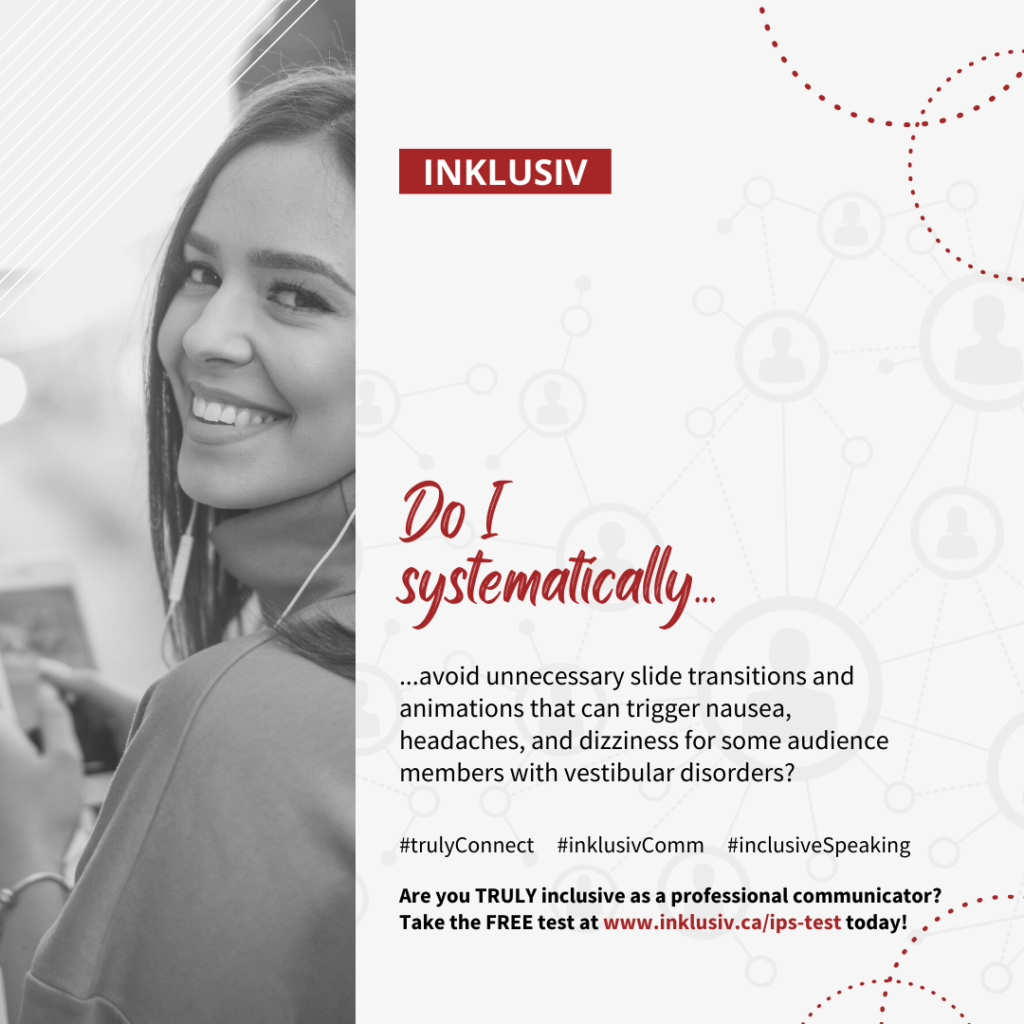

“Do I systematically avoid unnecessary slide transitions and animations that can trigger nausea, headaches, and dizziness for some audience members with vestibular disorders?”
More details about IPS Self-Assessment #072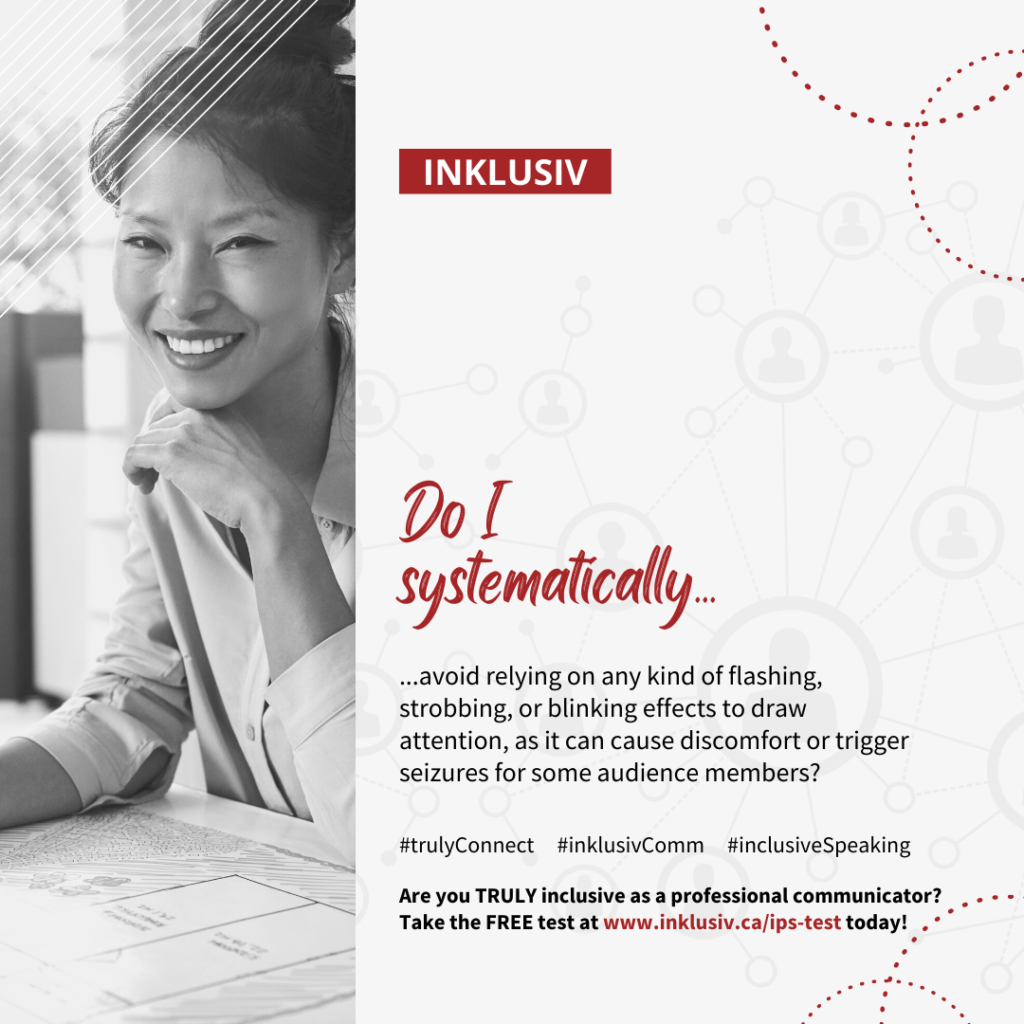

“Do I systematically avoid relying on any kind of flashing, strobing, or blinking effects to draw attention, as it can cause discomfort or trigger seizures for some audience members?”
More details about IPS Self-Assessment #071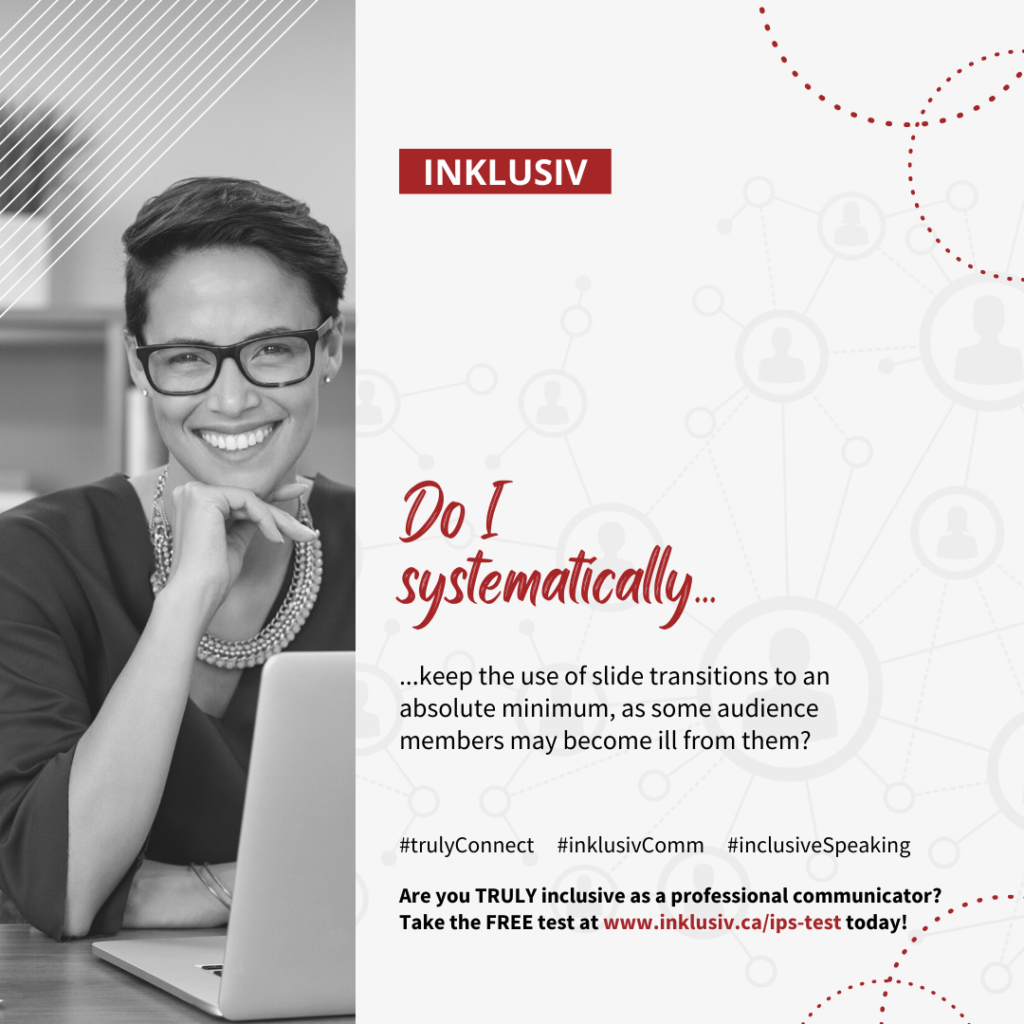

“Do I systematically keep the use of slide transitions to an absolute minimum, as some audience members may become ill from them?”
More details about IPS Self-Assessment #070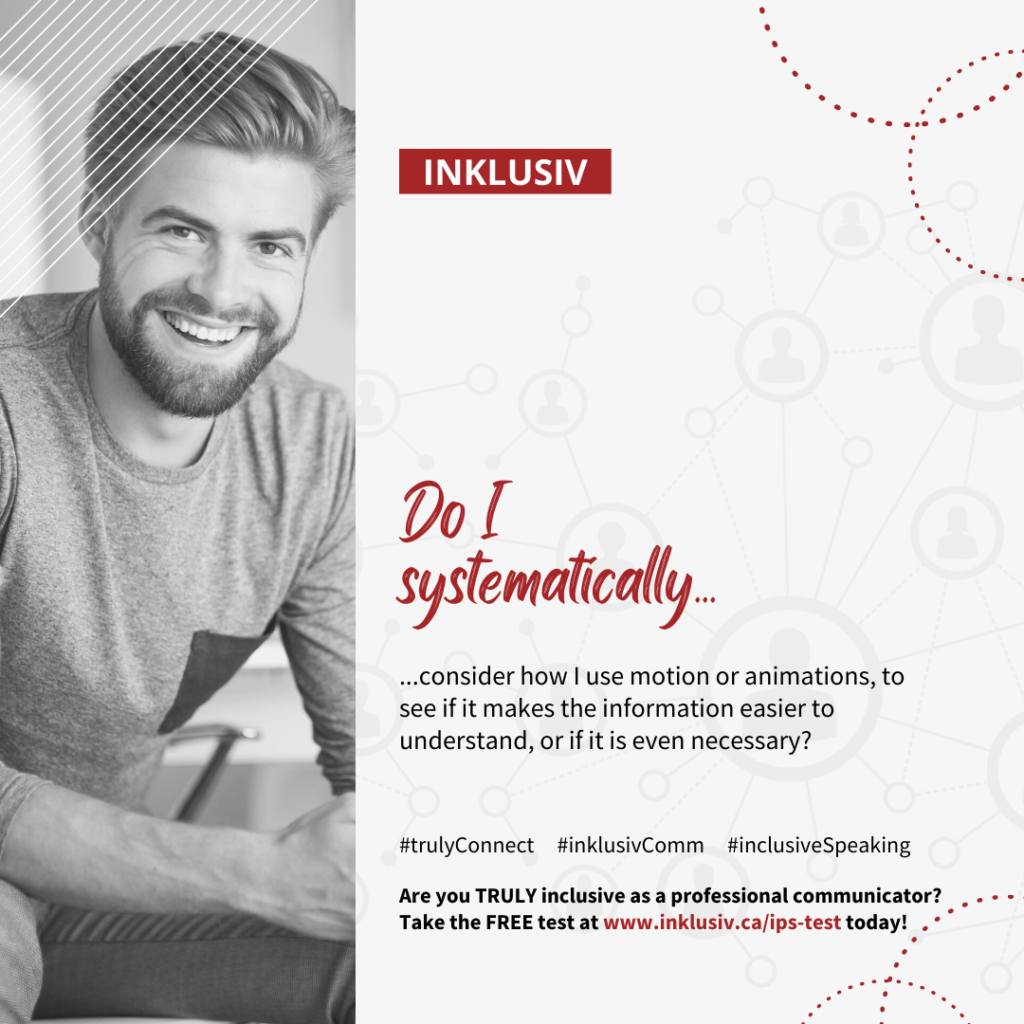

“Do I systematically consider how I use motion or animations, to see if it makes the information easier to understand, or if it is even necessary?”
More details about IPS Self-Assessment #069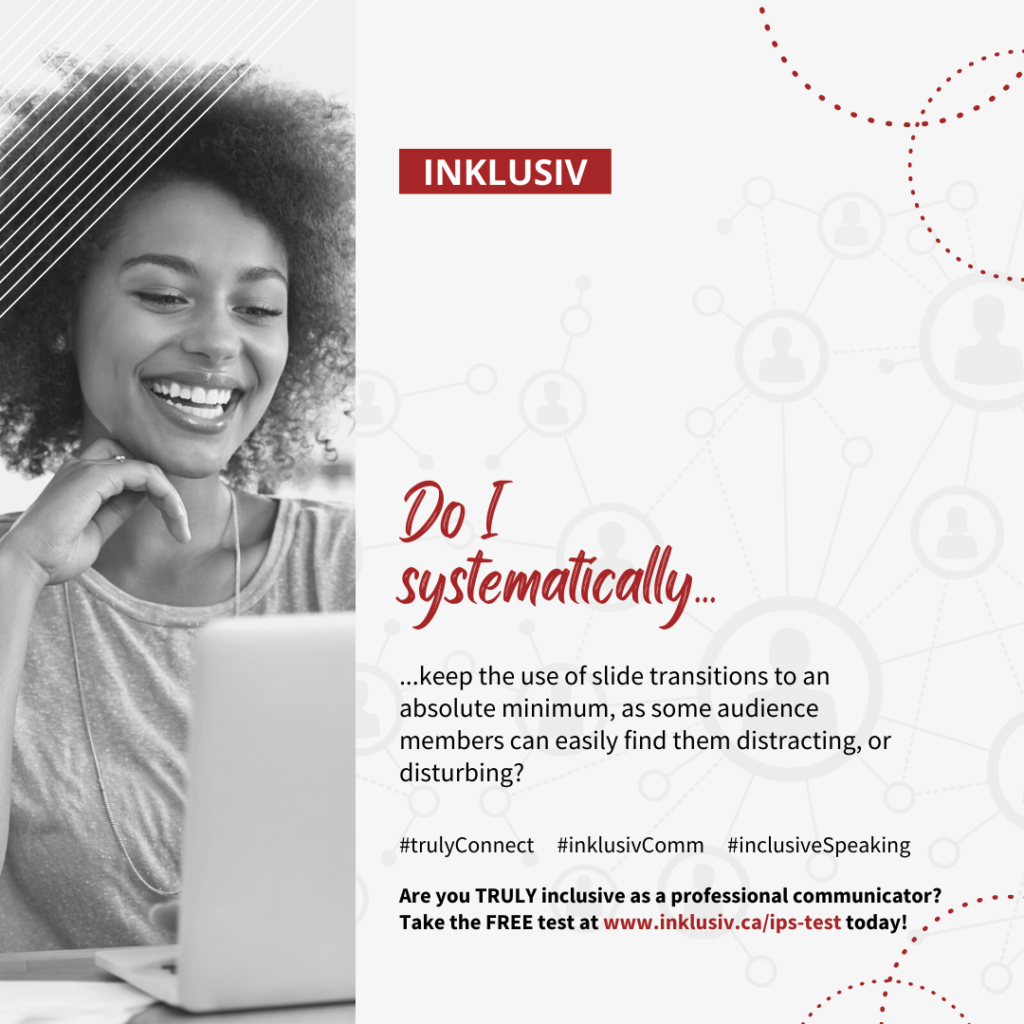

“Do I systematically keep the use of slide transitions to an absolute minimum, as some audience members can easily find them distracting, or disturbing?”
More details about IPS Self-Assessment #068